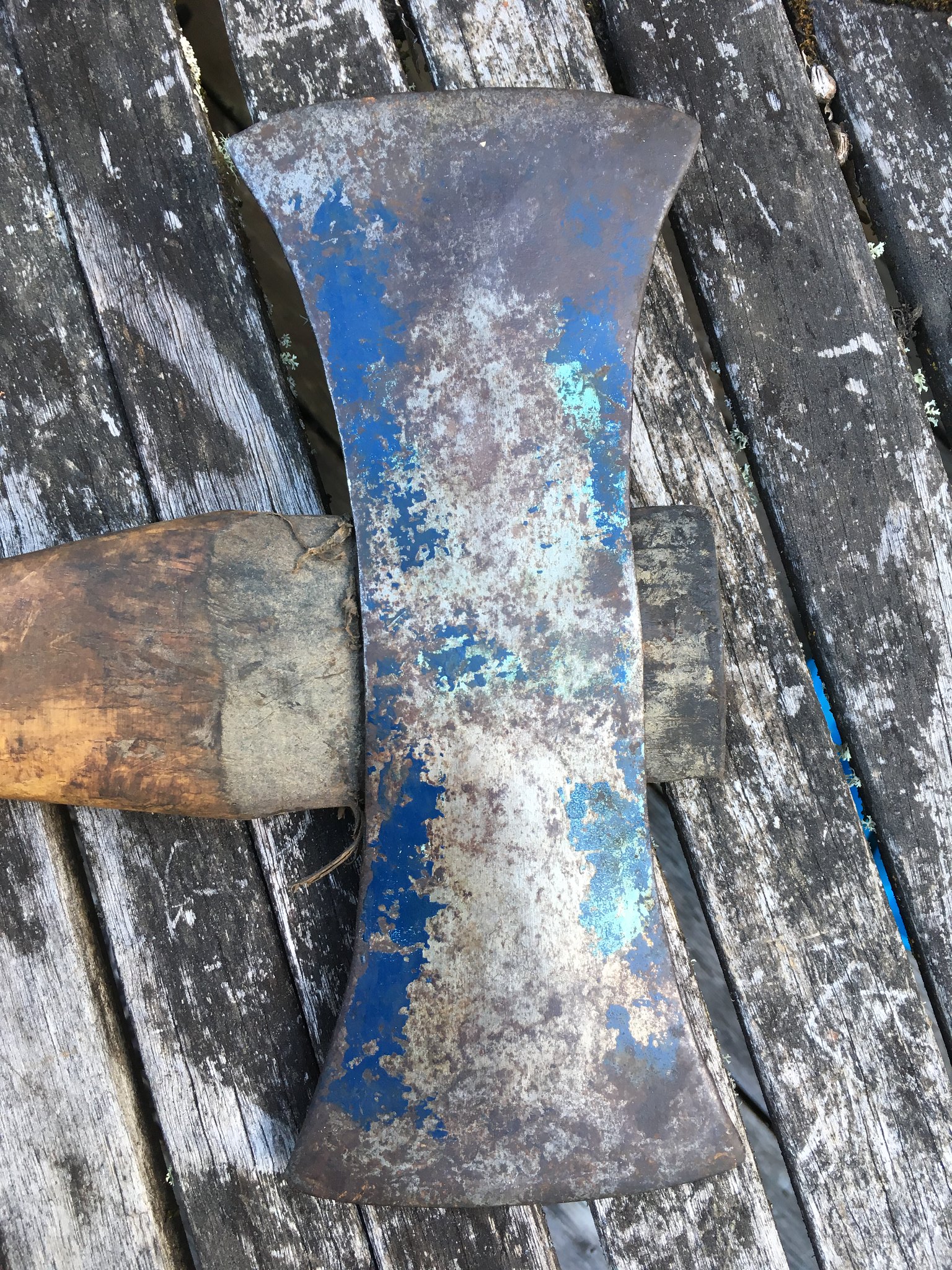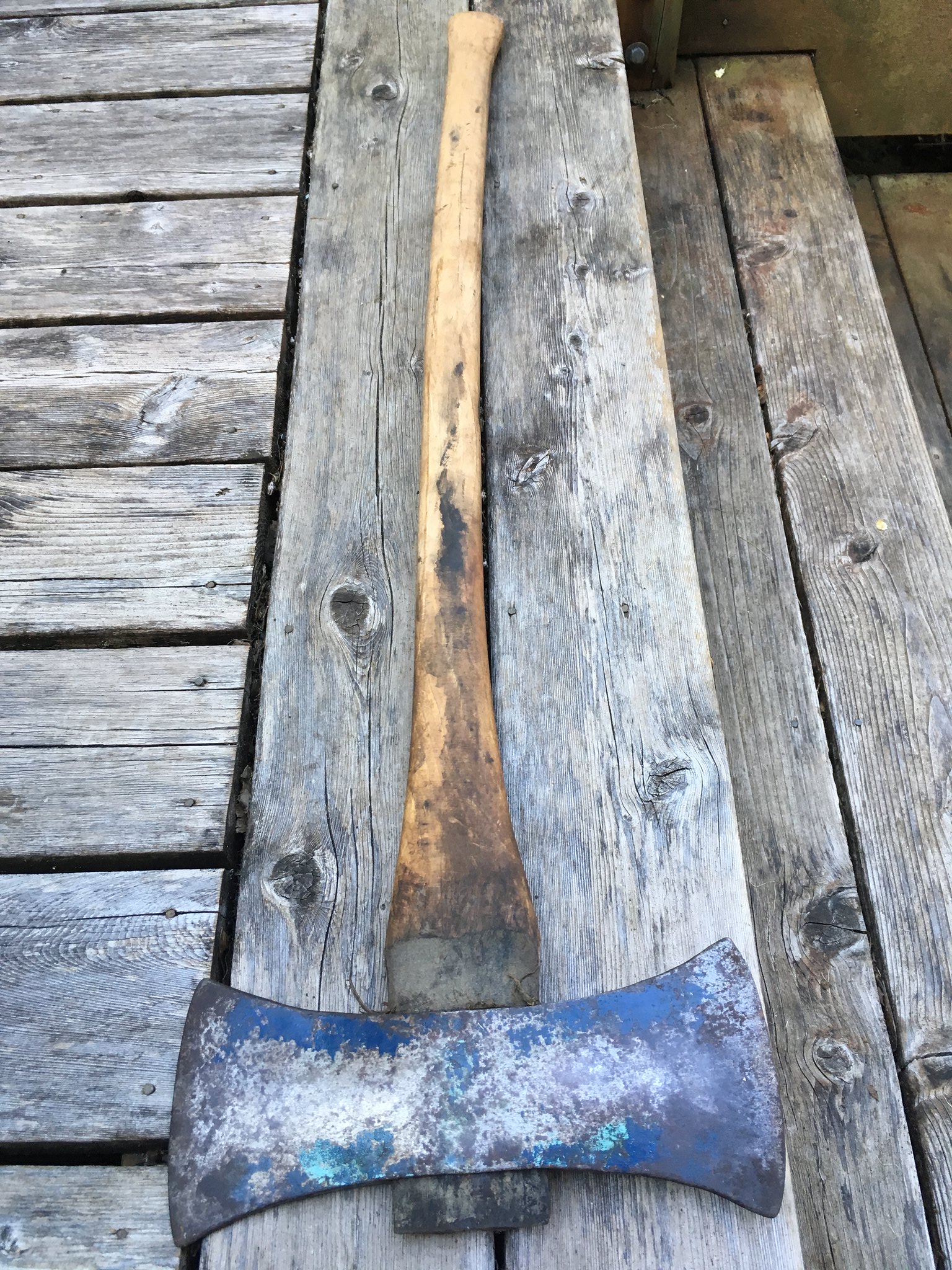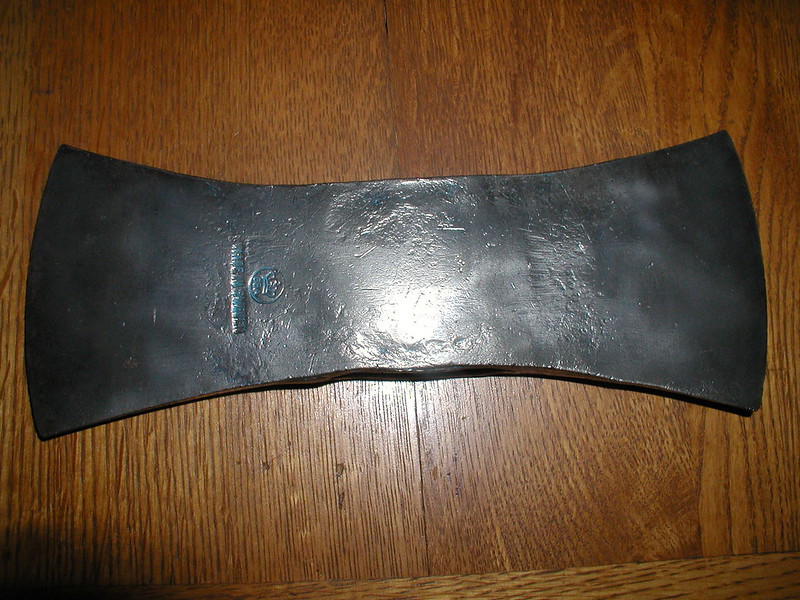-
The BladeForums.com 2024 Traditional Knife is ready to order! See this thread for details: https://www.bladeforums.com/threads/bladeforums-2024-traditional-knife.2003187/
Price is$300$250 ea (shipped within CONUS). If you live outside the US, I will contact you after your order for extra shipping charges.
Order here: https://www.bladeforums.com/help/2024-traditional/ - Order as many as you like, we have plenty.
You are using an out of date browser. It may not display this or other websites correctly.
You should upgrade or use an alternative browser.
You should upgrade or use an alternative browser.
Axe Shopping. Too Many? Lots 'o pics
- Thread starter Camperspecial
- Start date
Square_peg
Gold Member
- Joined
- Feb 1, 2012
- Messages
- 13,836
Square_peg
Gold Member
- Joined
- Feb 1, 2012
- Messages
- 13,836
Those are all from Warren Axe & Tool, 1937 catalog. And there's another page I didn't post. Some are different function. Some are just popular local patterns.
- Joined
- Aug 21, 2013
- Messages
- 3,898
My previous post was wrong the Collins is a swamping pattern not western, but you guys knew that.
Swamping was/is the term for building or clearing roads or skid trails and the men who did it were swampers.
This sounds like a good take. Somewhere around here is a description taken from a well-known article/book excerpt that reminds exacty of what Halfaxe wrote. We had them in the shed growing up but they rarely come up in conversation here.
Might there be another aspect to why they might call them "Swamping" axes? Something about the pattern itself and their use-specific intent? They are symmetrical double bits that could have easily been used by the guys who limbed a tree after it was felled. They are relatively thin heel to toe, and a little longer than a felling double bit. Many have a shorter edge that what I think of being a classic felling double bit. They are pretty light in hand on a thinned handle.
I was under the impression/imagined* Swampers also were also maybe the same guys following a down tree into whatever it fell into. Maybe a different situation/phase but limbing the downed tree had to happen. Sometimes flat clear ground, sometimes a wet incline. The more you work on ground, the faster it softens. Sometimes they landed on top each other.
Swampers maybe also prepped the tree to be yarded up to a landing/dragged out without excess the mess or excess drag that roughed up your track/skid (choker setters needed to get around the logs to chain/buckle the clasp) or just to be delimbed for loading. That plays into Halfaxe's description as well.
Many don't have super expressed cheeks and are normally on 36" handles. I have noticed that ones I find with original/old handles are a little thinner under the head or show a lot of wear there. That makes me think they were choked up on a fair amount. The older ones seem to have more "cheek" while a lot seem pretty flat as well. Seems like an effective design that would take limbs off of larger trees waist to ground level. You would be on top of, next to, and as far underneath you can reach. Of course felling smaller trees and thick brush like mentioned above - that would also be about the same size as large limbs. Limbs big enough to make that an appropriate sized axe for the task were probably large themselves - that general size/type of tree makes me think of what was being harvested in Washington, Idaho, Oregon, and Northern California.
That pattern also seems to show up in specific regions but what I am not sure of is when they showed up, where they first were used, or which pattern they directly evolved from. There are several other patterns that come close to looking like them. Maybe we could find a "first" reference in a catalog when they were offered?
I also wonder if they kind of coincided with the age of big man saws and then soon after the chain saw - when there less "axe-only" felling and more of a need to prep the logs for loading and/or their trip to a mill? I've also seen a lot of imported Swedish (GBA/HB) patterns that fit that "profile" pretty closely - a lot of them painted blue/aqua. Maybe those came later for American consumption? If so, then they were profitable to produce at least up to the days of Swedish imports competing with American makers?
Rambling. I like what Halfaxe said and that was probably their main duty. Just because I have/find a lot them doesn't mean I know any more than someone who doesn't. It is funny to think that I look for information on all these axes that I have never seen in person or really have any business knowing about but don't know much about the ones that are most common in my area.
Some of those, with their bits intact, can make for an "intimidating" looking tool. I would like to know what it sounded like with a crew of "Swamper" all working together on a fallen giant.
A third to half the limbs of your downed tree that you can't get to are in/on the soil.
Maybe that makes for a swampy day?



Dictionary.This sounds like a good take. Somewhere around here is a description taken from a well-known article/book excerpt that reminds exacty of what Halfaxe wrote. We had them in the shed growing up but they rarely come up in conversation here.
Might there be another aspect to why they might call them "Swamping" axes? Something about the pattern itself and their use-specific intent? They are symmetrical double bits that could have easily been used by the guys who limbed a tree after it was felled. They are relatively thin heel to toe, and a little longer than a felling double bit. Many have a shorter edge that what I think of being a classic felling double bit. They are pretty light in hand on a thinned handle.
I was under the impression/imagined* Swampers also were also maybe the same guys following a down tree into whatever it fell into. Maybe a different situation/phase but limbing the downed tree had to happen. Sometimes flat clear ground, sometimes a wet incline. The more you work on ground, the faster it softens. Sometimes they landed on top each other.
Swampers maybe also prepped the tree to be yarded up to a landing/dragged out without excess the mess or excess drag that roughed up your track/skid (choker setters needed to get around the logs to chain/buckle the clasp) or just to be delimbed for loading. That plays into Halfaxe's description as well.
Many don't have super expressed cheeks and are normally on 36" handles. I have noticed that ones I find with original/old handles are a little thinner under the head or show a lot of wear there. That makes me think they were choked up on a fair amount. The older ones seem to have more "cheek" while a lot seem pretty flat as well. Seems like an effective design that would take limbs off of larger trees waist to ground level. You would be on top of, next to, and as far underneath you can reach. Of course felling smaller trees and thick brush like mentioned above - that would also be about the same size as large limbs. Limbs big enough to make that an appropriate sized axe for the task were probably large themselves - that general size/type of tree makes me think of what was being harvested in Washington, Idaho, Oregon, and Northern California.
That pattern also seems to show up in specific regions but what I am not sure of is when they showed up, where they first were used, or which pattern they directly evolved from. There are several other patterns that come close to looking like them. Maybe we could find a "first" reference in a catalog when they were offered?
I also wonder if they kind of coincided with the age of big man saws and then soon after the chain saw - when there less "axe-only" felling and more of a need to prep the logs for loading and/or their trip to a mill? I've also seen a lot of imported Swedish (GBA/HB) patterns that fit that "profile" pretty closely - a lot of them painted blue/aqua. Maybe those came later for American consumption? If so, then they were profitable to produce at least up to the days of Swedish imports competing with American makers?
Rambling. I like what Halfaxe said and that was probably their main duty. Just because I have/find a lot them doesn't mean I know any more than someone who doesn't. It is funny to think that I look for information on all these axes that I have never seen in person or really have any business knowing about but don't know much about the ones that are most common in my area.
Some of those, with their bits intact, can make for an "intimidating" looking tool. I would like to know what it sounded like with a crew of "Swamper" all working together on a fallen giant.
A third to half the limbs of your downed tree that you can't get to are in/on the soil.
Maybe that makes for a swampy day?



7.
to remove trees and underbrush from (a specific area), especially to make or cleave a trail (often followed by out).
8.
to trim (felled trees) into logs, as at a logging camp or sawmill.
No doubt the area had to be swamped around the tree to be felled also. Do you come across that pattern with notches in the handle from under bucking?
- Joined
- Aug 21, 2013
- Messages
- 3,898
I haven't actually noticed that Garry. But now that you ask, I think that I may have gone "Swamping" blind when I look at them though. There are many times I won't look at them over other patterns in a stack or pile. Probably taking for granted what there are more of. I do notice they show up in batches around here though.
Two I passed on to someone else went to guys in Sandy,Or. They both worked in Timber Harvest and referred to themselves as Foresters. My take on that was modern logging for what it looks like compared to a lot of what we talk about here.
Two I passed on to someone else went to guys in Sandy,Or. They both worked in Timber Harvest and referred to themselves as Foresters. My take on that was modern logging for what it looks like compared to a lot of what we talk about here.
Square_peg
Gold Member
- Joined
- Feb 1, 2012
- Messages
- 13,836
- Joined
- Aug 21, 2013
- Messages
- 3,898
Thank you for this halfaxe! Puget Sound (or 'west coast springboard' the way I perceive it) received air time on here a few years ago and then "Cedar" axe was explained not all that long ago. Even "cruiser" (recreational horsey rider's saddle axe and timber surveyor's marking and clearing tool) managed to go back to it's roots via this forum. So now 'swamper' actually means something to me aside from the profile too.My previous post was wrong the Collins is a swamping pattern not western, but you guys knew that.
Swamping was/is the term for building or clearing roads or skid trails and the men who did it were swampers.
I'm going to have to dig around to unearth my 'unused for the past 37 years' double bit Gov't of BC-marked Walters to see if it happens to be a "swamper".




